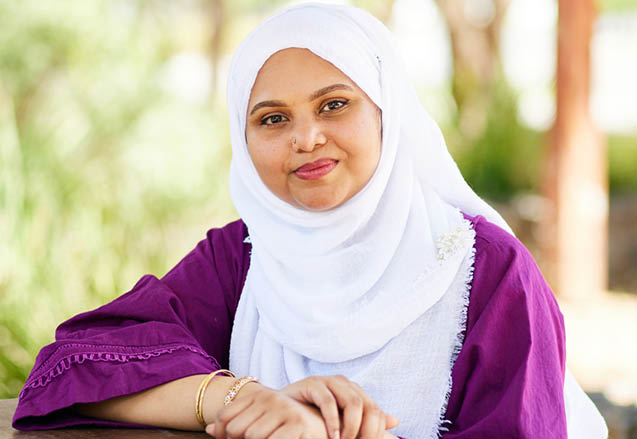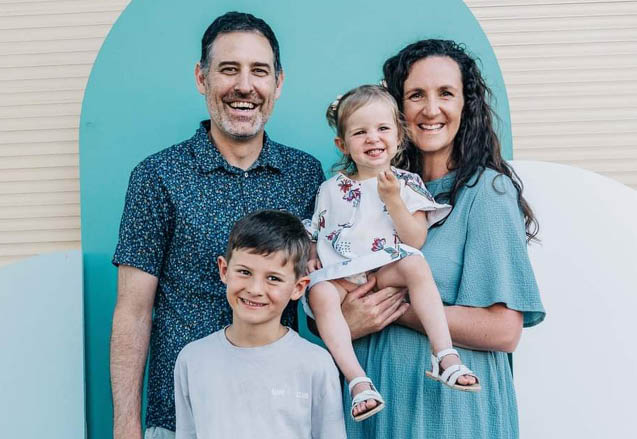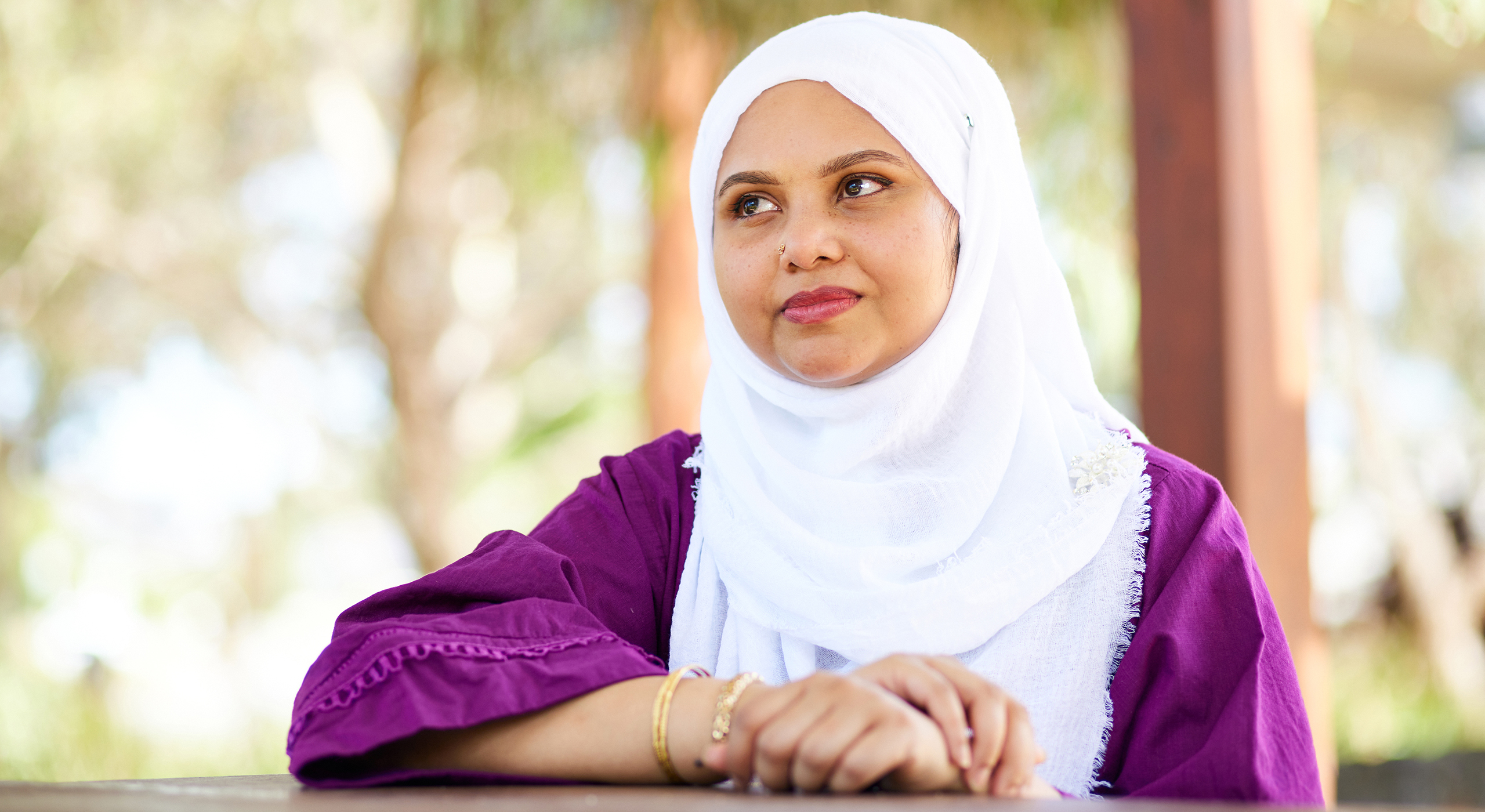In the months leading up to the birth of her son, Bahman, Dr Ishita Akhter had researched her options thoroughly. With a PhD in engineering from the University of Melbourne, she knew that knowledge and preparation produce better outcomes. But nothing could have prepared her for the shock of waking from an emergency caesarean to discover her newborn was nowhere to be seen.
“I woke up and said, ‘Where’s my baby? Bring him to me, where is he?’ I kept asking for him, but I was told I couldn’t see him,” she says, from her home in Melbourne. “It was the worst experience of my life.”
In fact, it was several hours before Ishita, 35, was able to enjoy skin-to-skin contact with her baby, despite repeated requests to visit him. While friends of hers had been able to have their newborn next to them in the hospital cubicle, baby Bahman was kept in the nursery, even though Ishita says he didn’t need additional support. “I missed the golden hours with him and that still bothers me a lot,” she says. “I feel so bad about that.”
Her distress was compounded by the urgency and shock of the caesarian, and her belief that her birth preferences were ignored by medical staff, resulting in a cascade of unwanted interventions during labour. “I was really angry after the whole fiasco,” she adds. “I felt I was betrayed by the healthcare profession. No one was there to listen to me.
“I could have done more to avoid the caesarean. I felt I failed my baby.”

You never forget how you’re treated in birth, the saying goes. For many Australian women like Ishita, it’s far from a happy memory.
In fact, one in three women– or 100,000 women a year – are estimated to suffer birth trauma, a term used to describe physical, emotional or psychological distress resulting from a woman’s experience during labour or birth.
A recent study by academics at Western Sydney University’s School of Nursing and Midwifery into obstetric violence – which is defined as disrespectful or abusive care by a healthcare professional – found one in 10 women felt “dehumanised, violated and powerless” during labour in Australia.
In the study of over 8,500 women, those reporting obstetric violence described being physically manhandled, coerced into agreeing to interventions they didn’t want and receiving vaginal examinations they hadn’t consented to. “One time she [obstetrician] didn’t even tell me she was going to penetrate me & I almost flew off the table with shock & pain,” one woman commented.
One in 10 women felt “dehumanised, violated and powerless” during labour
In 2015 the World Health Organisation raised concerns about obstetric violence, but it’s still not being spoken about enough, says professor of midwifery at Western Sydney University, Hannah Dahlen, one of the authors of the obstetric violence study. “We talk about ending violence against women and ignore this huge number of women affected every year coming out of their births seriously traumatised.
“There is a prevailing attitude that healthcare providers are just trying to save lives and women should suck it up. What we have is evidence of many women who are having treatment that isn’t needed nor consented for that isn’t in an emergency situation, where women are having their legs pulled apart without their consent, their birth plans dismissed, and episiotomies and vaginal examinations done against their wishes.”
Adds associate professor Dr Heather Mattner, a perinatal health psychologist: “They need to stop the terrible trade off that women should be thankful they have a healthy baby. You do not trade off the health of the baby for the health of the mother. A baby will not benefit if the mother is broken.”
For a couple of months after Bahman’s birth, Ishita felt disconnected from her newborn. “I withdrew from everything and couldn’t see the point of anything,” she says. “The bonding that should have developed didn’t. I knew the baby was mine, but felt I wasn’t good enough to form a bond with him. I’d ask my husband to take him if he was crying. I was just there to feed him.”
***
It’s hard to say if the incidence of birth trauma is increasing, or if women are simply talking about it more publicly, perhaps as a consequence of the #MeToo outpouring of grief and outrage. Sophie Walker, who started her podcast Australian Birth Stories seven years ago, says she has noticed a “hunger” among women over the past few years for knowledge about the experience of other women during childbirth. (The podcast has attracted 11 million downloads.)
“Some women are asking, ‘What could I have done differently?’ Or, ‘How can I prepare better for my second or third or fourth experience, because that just completely wasn’t what I was prepared for’,” she says. “And I know myself that’s how I came away from my first birth after a traumatic experience. I was like, wow, I’ve really missed a piece of the puzzle here. How can I try and improve things for myself in future?”
Sophie also questions the rates of intervention here in Australia, where episiotomies (a cut made in the tissue between the vaginal opening and the anus during childbirth) doubled from 12.7 per cent in 2009 to 24.3 per cent in 2019. Over the same period, the rate of women delivering their babies via caesarean section jumped from 32 to 37 per cent, with the use of forceps also increasing.
Some women are asking, ‘What could I have done differently?’
Of course, not all caesareans are traumatic, just as not all vaginal deliveries are joyful. Trauma can occur even in a birth that hasn’t required significant intervention. But an emergency caesarean is often traumatic for women and their birth partners, many of whom may never have been in hospital before.
After labouring at home for several hours overnight, Ishita went to hospital when her contractions became stronger and closer together. Her cervix was eight centimetres dilated but the doctor wanted to slow the labour to enable her to become fully dilated at 10 centimetres for delivery. “I have low blood pressure, so I was reluctant to have an epidural, as I’d read it could lower blood pressure further,” she says. “I said, ‘Are you absolutely sure this is the right way, considering my situation, my file and everything?’ And they specifically said, ‘If you want to avoid c-section, this is your best option.’”
Ten minutes later, Ishita was told she would need an emergency caesarean and rushed into the operating theatre. Her husband wasn’t allowed in. “They said I would have local anaesthesia and then suddenly they said I had to have to have a general. That was the last thing I remember.”
****
Birth-trauma feelings of shock, inadequacy, guilt and fear may persist long after a woman has given birth, and they can become more intense over time, says founder and executive editor of the Centre for Perinatal Excellence (COPE) Dr Nicole Highet. “Some parents describe feeling very emotional, alone or isolated and often find it difficult to bond with their babies.”
Birth trauma can have significant implications for relationships, too, particularly if the partner has also been traumatised, Highet adds. “Experiencing trauma can, for example, create confusion, distance and distress between a couple, and they can unknowingly continue to trigger each other long after the event.”
After the traumatic birth of her first child, Levi, in 2015, Lauriann Higgins couldn’t imagine having another baby.
“I feared falling pregnant again because the fear of birthing was horrendous,” says the now 38-year-old teacher. “I didn’t want to have sex [because] I was terrified I’d get pregnant, which affected my relationship with my husband. Gavin didn’t understand why.”

Lauriann’s birth trauma resulted from how she felt she was treated by her healthcare providers. After going into labour naturally at 42 weeks, her contractions slowed and the decision was made for her to receive syntocinon, a synthetic form of the naturally-occurring hormone oxytocin, used to increase the speed of labour. “I vomited immediately and I was sweating and shaking – I couldn’t control the shakes,” she says. “But probably the most traumatising part was that my husband and I didn’t have any support. We were alone, just looking at each other, like, what do we do?”
Lauriann then started to haemorrhage blood and, like Ishita, was rushed to theatre for a caesarean section. “I knew that a c-section was always a possibility – I was always committed to the safest option for our baby,” she says. “But I felt I didn’t have support or people in my corner to kind of hear my voice, or to work with me and work with my husband, as well. And I didn’t feel in control. When you’re delivering a baby, you don’t actually really have full consciousness of what’s going on around you and I felt like a lot of decisions were being made for me that I didn’t want.”
No one checked in on Lauriann’s emotional state in the days following her discharge from hospital. “I carried a lot of confusion and guilt about what I’d done wrong. I felt it was my fault,” she says. “It took me a long time to feel like I was a mum. I started to second-guess myself because I had so much fear.” Four years after Levi’s birth, Lauriann was diagnosed with postnatal depression and PTSD.
***
The COVID-19 pandemic has undoubtedly affected women’s experience of birth and postnatally. Health professionals were – and still are – under extraordinary pressure, while partners and other support people were often unable to join them in the delivery room.
Perinatal Anxiety and Depression Australia (PANDA), which supports parents’ mental health during and post-pregnancy, reported a 45 per cent increase in demand for its services during the pandemic; in the 12 months to June 2022, demand for mental health support has exceeded pre-Covid levels.
PANDA CEO Julie Borninkhof says two thirds of expectant mothers felt disconnected from pregnancy and/or their baby during the perinatal period. Annually, nearly half of callers to PANDA mention birth trauma.
PANDA reported a 45 per cent increase in demand for its services during the pandemic
Part of the problem is the lack of continuity of care, which means many women aren’t able to see the same obstetrician or midwife through their pregnancy. One meta-analysis of studies into birth trauma and depression found that women who receive consistent midwifery care during their pregnancy were more likely to have a spontaneous vaginal birth, require less pain relief and have fewer adverse outcomes, thereby minimising the likelihood of a traumatic birth.
“COVID has been a bad time of de-personalised care, lack of relationship-based care, health providers incredibly burnt out and short-staffed,” says Western Sydney University’s Professor Hannah Dahlen. “The shortage of midwives now is getting to a critical level. They can’t give compassionate care when they are running on the smell of an oily rag.”
Obstetricians, too, are suffering in this pressurised environment, says Associate Professor Gino Pecoraro, President of the National Association of Specialist Obstetricians and Gynaecologists. “Obstetricians feel wronged and upset,” he says. “We are seeing junior doctors not putting their hand up to train in this area because they are tired of being seen as the enemy. Timely, appropriate obstetric treatment can decrease the need for operative deliveries and increase the chance of a vaginal delivery. That means the correct use of syntocin, induction of labour and recommendations of epidurals.
“People expect a perfect outcome, a wonderful experience, as well as a live baby. But [birth] can be harrowing and frightening, as well as a wonderful experience.”
Like almost every person interviewed for this story, Professor Pecoraro emphasises the need for both education and continuity of care. “We need people [to be] given honest information in a way they can understand it [and] we need to bring obstetricians back into the mix [of pre-natal care], so that every pregnant woman gets to see one a couple of times during pregnancy, so they’re not meeting a stranger for the first time at one of the most vulnerable times in their life.”

While Ishita is busy caring for 10-month-old Bahman, Lauriann now has a little girl, Savannah, aged two. Her experience during this second pregnancy was very different to her first. “I was cared for by a midwifery group practice and a maternal-fetal medicine team [for an issue that later resolved], so I was very supported. I went into labour naturally at 41 weeks and there was no talk of syntocinon – it was very much about letting my body do its thing. And even though I did need an emergency caesarean in the end, I felt more in control.
“Having a midwife that talked through all the options, who was on my side, was invaluable.”
If you need mental health support, you can call PANDA’s national hotline Monday to Saturday on 1300 726 306.
Main image shot by Brian Doherty













No Comments